If you want to build a thriving vegan business you’re going to need a great vegan branding strategy. There are few industries that are growing as rapidly as vegan food. While the vegan industry is currently worth an impressive $4.5 billion, those numbers are set to explode—with experts projecting the vegan food market to be valued at a staggering $24.3 billion by 2026.

With so much growth, potential and opportunity at stake, there’s never been a better time to get into the vegan industry. But if you want to succeed, it’s not enough to have a great product—you also have to have a memorable vegan brand.
But how, exactly, do you build a brand that stands out in the vegan market? Let’s take a deep dive into all things vegan branding and break down exactly how to build an impactful, attention-grabbing and successful vegan brand.
- Branding basics: the difference between brand, branding and brand identity
- Questions to ask yourself pre-branding
- Defining your design building blocks
- Designing your key vegan brand elements
- Bringing it all together with a brand style guide
- Things to keep in mind when branding your vegan business
Branding basics: the difference between brand, branding and brand identity
—
Before we dive into how to brand your vegan business, let’s take a minute to cover the basics of branding.
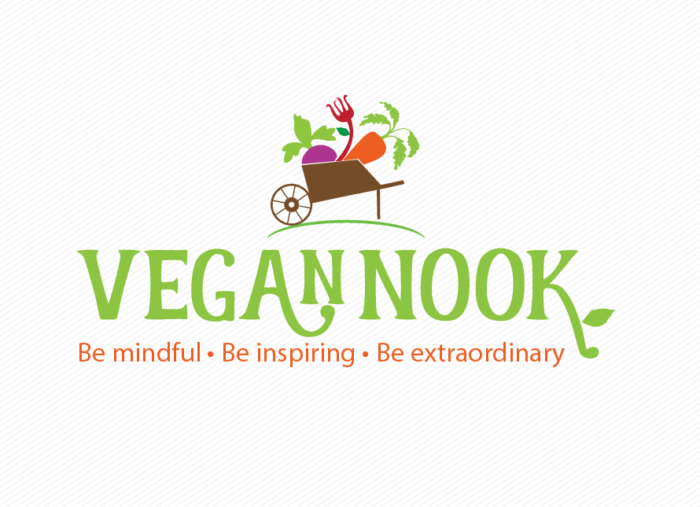
When it comes to branding your business, there are three key concepts you need to understand: brand, branding, and brand identity. Think of them as the “three B’s.”
The differences between the three b’s may be subtle, but those differences are important to understand as you’re building your brand:
- Your brand is the outside world’s (including your customers’) perception of your company.
- Branding is a verb; it’s any action you take to shape your brand and bring it to life.
- Your brand identity? That’s all the key elements you create during the branding process—like your logo, business card, website, and packaging—to communicate your brand messaging to your audience.
All three B’s play a key role in building a marketable, thriving and recognizable vegan brand. Think of them like building blocks; each of them builds off the other—and you need all three in order to build a cohesive and successful vegan business.
Questions to ask yourself pre-branding
—
Understanding the basics of branding is a good jumping off point—but before you start building your vegan brand, there are a few key questions you need to answer.
Who are you?
In general, the most successful brands are the ones who truly connect with their customers. And because the vegan industry is so competitive, forging that connection is even more important.
Your customers aren’t going to be able to connect with you if you don’t have a clear identity for them to connect to, which is why it’s so important to define who you are as a brand before you start the branding process.
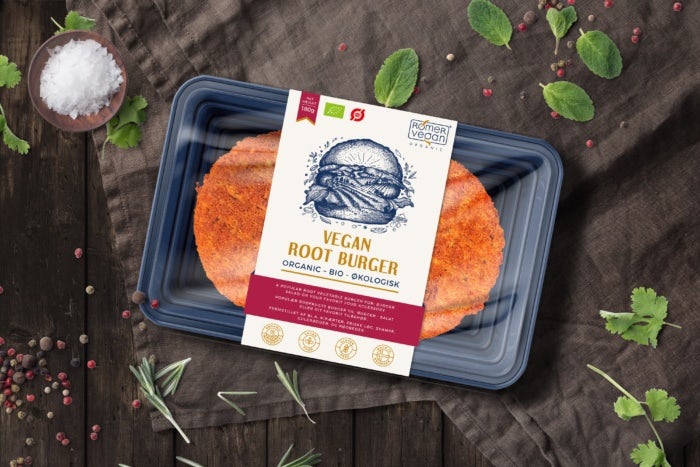
Before you start branding your vegan company, take the time to get to the root of who you are as a company, and how you want that identity to come across to your audience. One helpful, and simple, way to get to the root of who you are as a brand is to ask yourself “how would I describe my brand in three words?”
If, for example, you’re launching a line of vegan butter targeted towards parents. Your adjectives might be “convenient, clean and ethical.” If your vegan butter line was targeted towards foodies or chefs, those adjectives might change to “gourmet, high-end and exclusive.”

The point is, boiling your brand down to a few adjectives can help you get really clear on who you are and what you’re trying to accomplish. Once you have that clarity, you can use it to guide your branding process and decisions.
Who is your audience?
Again, the success of your brand depends on how well you can connect with your audience, which is why it’s so important to get clear about who that audience actually is.

Before you get too far into the branding process, take the time to create an ideal customer avatar. Get as detailed as possible. Who are they? What are they looking for in their products and brand partners? Are they experienced vegans, new vegans or “vegan-curious?” For example, maybe your target customer is new to the vegan lifestyle and is looking for alternative products to replace the meat and dairy they’re used to incorporating into their diet. Or maybe your target client is vegan for ethical reasons and is looking to partner with brands that are focused on sustainability and animal rights.
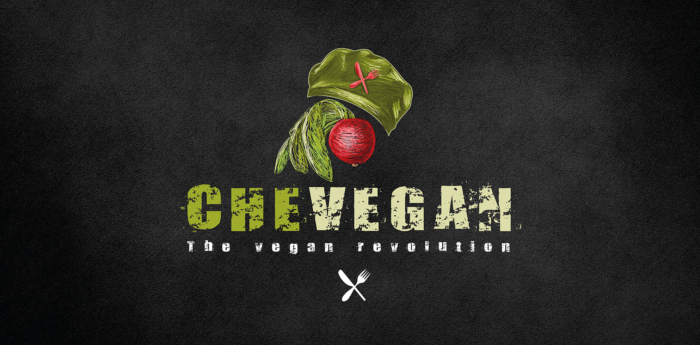
The more you know about your ideal customers before you start branding, the more you can use that knowledge to guide your branding decisions and ultimately build a vegan brand that truly speaks to those customers.
Who are your competitors—and how do you differ from them?
As mentioned, the vegan business has grown a tremendous amount in recent years and is continuing to grow rapidly. With that growth comes countless new vegan brands.

That’s why, if you want your vegan brand to succeed, it’s important to know who your competitors are and, more importantly, how you differ from them.
There are already a ton of plant-based, health-conscious vegan brands on the shelves. Knowing what makes you unique, innovative, and different from the other vegan brands out there (known as your point of difference) will help you break through the clutter, grab your customers’ attention and encourage them to choose your brand over the hundreds of other options on the market.
What are your brand mission and values?
Having a strong brand mission and values are important for any brand, but they’re especially important in vegan branding.
A huge percentage of your customer base are vegan because of their beliefs, ethics, and values and they need to know that any brands they work with or products they buy are aligned with those beliefs, ethics and values.

Before you start actively building your brand, it’s important to understand your corporate mission and values.
Your mission statement is the “why” behind your vegan brand, so it’s a great place to start. Why are you launching your vegan brand? If you need some help defining your corporate mission, try filling in the blanks of the following statement: “Our company exists to ______. In five years, we plan to _____.”
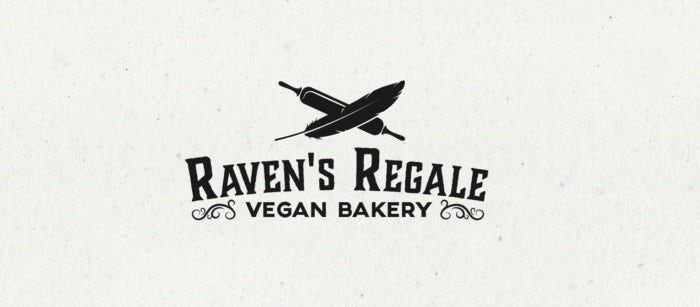
Once you have your mission, it’s time to define your corporate values. Your values aren’t just key in driving your internal vegan branding strategy, it will also help you forge an authentic connection with your customers. What do you stand for as a brand and how does that speak to your vegan audience? For example, plant-based food and beverage brand Good Karma puts their corporate values right in their tagline: “Good Karma isn’t just our name—it’s the inspiration for everything we do. We believe in celebrating tiny but mighty acts of goodness.”
Your corporate mission and values communicates who you are, what you stand for and what you’re trying to accomplish to yourself, your team, and your customers and they play a key role in helping you carve out your spot in the vegan industry.
Do you want to use vegan terminology in your branding?
Another question you need to answer before you start branding your vegan business is whether you’re going to use vegan terminology in your branding.
It might seem like a no-brainer (we’re a vegan company; of course we’re going to use vegan terminology in our branding!) but the truth is, using certain terms (like “vegan” or “meat-less”) might not be the best idea for your brand.
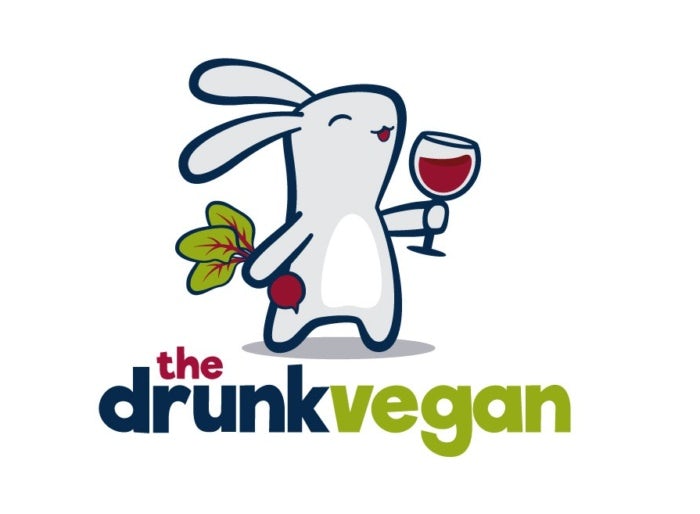
First off, vegan food and products can be enjoyed by anyone but putting the term “vegan” on a product can make it seem exclusive and turn non-vegans away. Using terms like “plant-based” can help get the same idea across without potentially turning away would-be customers that aren’t exclusively vegan.
Also, using terminology like “meat-free” or “free from animal protein” can make customers question the quality and taste of your products. A recent study from Stanford University found that participants chose vegetables with “indulgent” language 41% more than vegetables with “healthy restrictive” language.” So, if you want your products to sell, it’s important to avoid language that people might read as overly “health restrictive,” like “meat-free” or “free from dairy and eggs.”

A great example of how to do this well? Beyond Meat. Not only do they avoid using “vegan” on their packaging (they use plant-based language, like“plant-based patties” or “plant-based” sausage), they also focus on what their products offer, not what they’re missing. Instead of focusing on the lack of meat, the “beyond” in their company name suggests transcending traditional meat products and by using enticing words like “sizzle” and “now meatier than ever,” they’re leveraging the kind of indulging language that draws in customers.
Defining your design building blocks
—
Once you’ve answered the above pre-branding questions, the next step of the process is to define your brand’s design building blocks.
There are a few key design principles and elements you’ll need to define to drive your vegan branding process, including:

- Typography. The fonts you use in your branding can (and will!) send a strong message about your brand to your customers. For example, if you’re launching a children’s vegan product, using a fun, whimsical graphic font could be a good choice—but if you’re launching a vegan supplement company, you’d want to go with something more modern, streamlined and sophisticated.
- Color palette. Color is one of the most powerful tools in your branding toolbelt—especially when it comes to food branding. People have strong associations with color and when you really understand those associations, you can be strategic with your color choices and use your brand color palette to inspire specific thoughts, emotions and reactions in your audience. For example, as a vegan brand, you might want to incorporate green into your color palette, which people associate with nature.
- Form/shape. A sharp, angular logo is going to create a different look, feel and message for your brand than something more soft and organic so it’s important to choose forms and shapes that align with your brand messaging.
- Brand voice. What you say as a vegan brand is important, but so is how you say it. Taking the time to define your brand voice will be extremely helpful when it comes to bringing your brand to more consumer-facing platforms like social media.
Designing your key vegan brand elements
—
Once you’ve defined the basics of your brand identity, it’s time to use those basics to start designing your key vegan brand elements.
There are a few brand elements you’ll need to launch your vegan brand, including:

- Logo. Your logo is the face of your business and, as such, it’s the single most important element you’ll design during the vegan branding process. No matter where your customers encounter your brand (like your website, packaging or at an event), they’re going to come face-to-face with your logo. As such, it’s the brand element your customers will most closely associate with your brand so it’s super important to get it right.
- Packaging. Well-designed, on-brand packaging is a must for any business selling a physical product, but it’s especially important in the ever-growing vegan industry. Because you’re dealing with so much competition, it’s important to design packaging that breaks through the clutter and grabs your ideal customers’ attention.
- Digital presence. Shopping online is more popular than ever and that absolutely includes vegan products. As such, it’s important to ensure that your digital presence, which includes your web design, your email templates and any social media platforms) is an accurate reflection of your vegan branding.
All of these elements play a key role in the vegan branding process. Before you bring your vegan brand to market, you want to make sure they’re well-designed, on-point and on-brand.
Bringing it all together with a brand style guide
—
Going through the branding process helps you define the key elements of your vegan brand. But moving forward, you want to make sure that any new products, packaging, copy, or anything else tied to your brand is aligned with that branding and that’s where a brand style guide comes in.

Your brand style guide is a centralized document that houses all the must-know information about your vegan branding. You can go into as much detail as you’d like in your brand style guide (and in fact, the more detailed, the better!), but at the very minimum, you should plan to include:
- Brand origins
- Corporate mission
- Corporate values
- Logo(s) and approved uses
- Brand color palette
- Brand fonts and typography
- Brand voice
- Packaging design
- Approved imagery, photos and graphics
Having a brand style guide is a must; not only is it convenient to have all of that key information assembled in one place, but it helps to maintain consistency as you grow your vegan brand. A brand style guide helps to get everyone on your team on the same page, which ensures that whatever they create for your brand (whether that’s a new packaging design or a social media post) is in line with your big-picture vision and overall vegan branding strategy.
Things to keep in mind when branding your vegan business
—
Want even more info on how to brand your vegan business? Here are a few additional points to keep in mind throughout the branding process:
- Know your customers’ objections and proactively overcome them. If your target consumer is new to the vegan lifestyle (or not vegan at all—and just interested in incorporating more plant-based foods into their diet), chances are, they’re operating with a few deeply-held preconceptions about vegan food. one of the most common notions is that vegan food isn’t as tasty or flavorful as foods that incorporate meat, dairy, eggs and other animal products. If you know that about your customers, it’s good to take proactive steps in your branding to combat those beliefs. You can do this by focusing on flavor or creating branding materials that outline why your products are better (and tastier!) alternatives to animal products
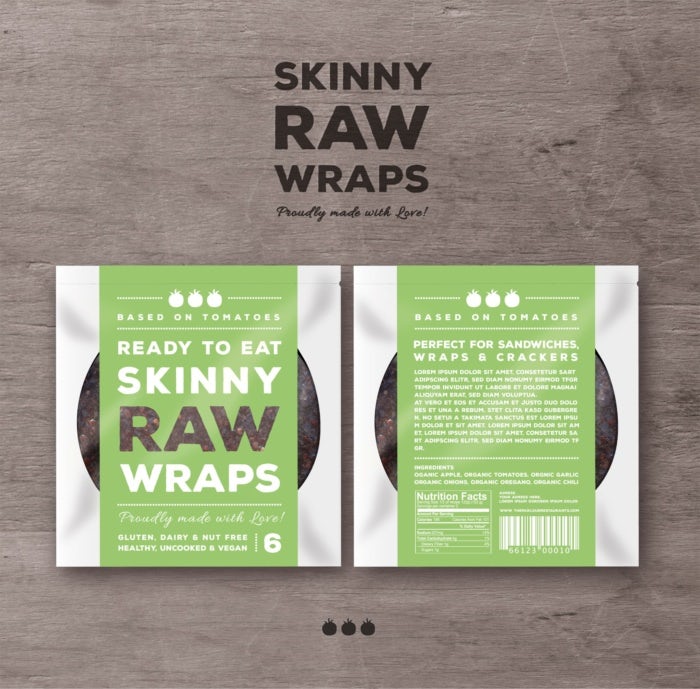
- Understand the different reasons behind your customers’ choice to go vegan. People choose a vegan lifestyle for a variety of reasons. Some go vegan for ethical reasons, some choose a plant-based diet to be healthier, and others embrace veganism to help with food allergies or sensitivities. Understanding your ideal customer’s motivation for going vegan can help you tailor your branding to speak to their specific wants and needs, which can make your overall branding more effective.
- Don’t be afraid to think outside of the box. Just because you’re a vegan brand doesn’t mean you have to go with the stereotypical branding approach. Don’t be afraid to be different and think outside of the box! Creating an edgy or unexpected brand is a great way to stand out amongst all the green, environmentally-focused vegan brands out there.
Get out there and brand your vegan business
—
The vegan industry is growing like crazy and now that you understand how to brand your vegan business, you have everything you need to get out there and make your mark on this emerging industry. So what are you waiting for? Get out there and start branding!
The post Vegan branding: the complete guide to creating a thriving vegan brand appeared first on 99designs.
Vegan branding: the complete guide to creating a thriving vegan brand posted first on https://www.lilpackaging.com
No comments:
Post a Comment